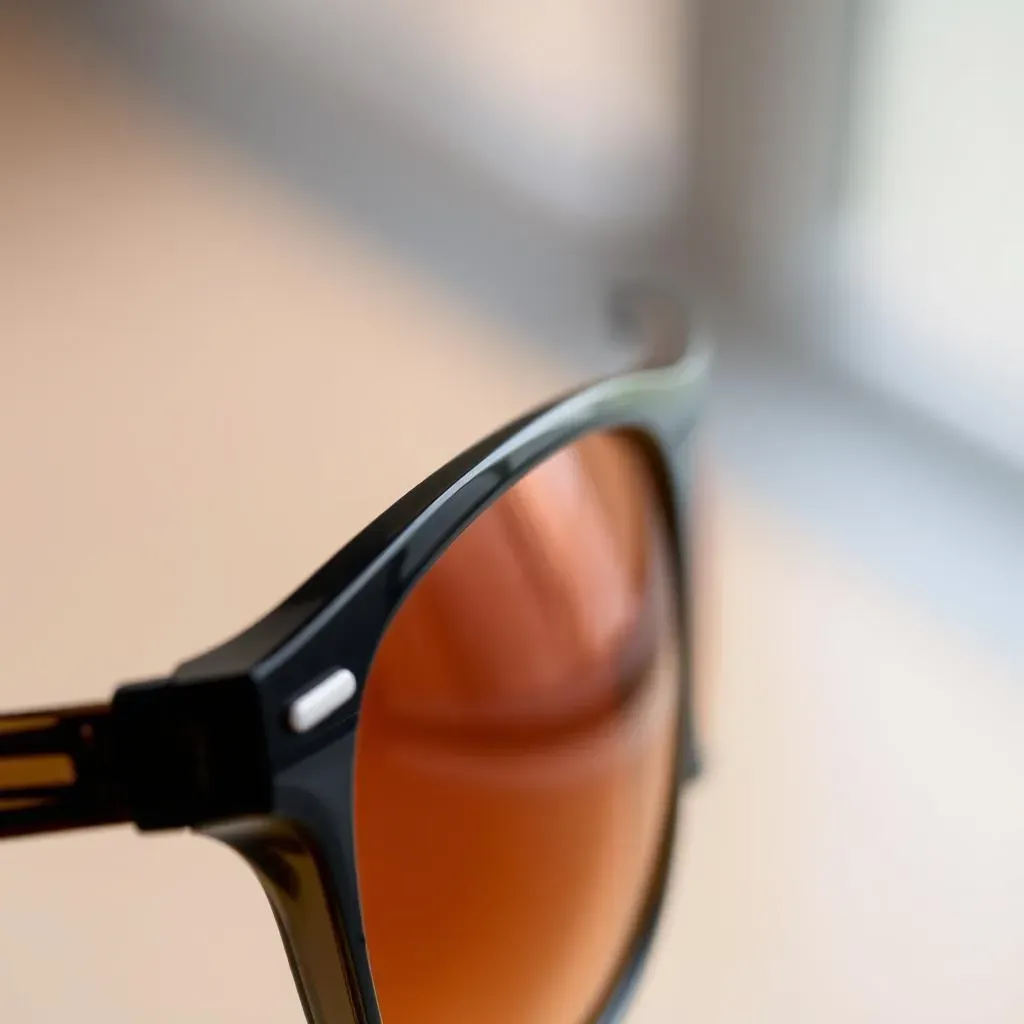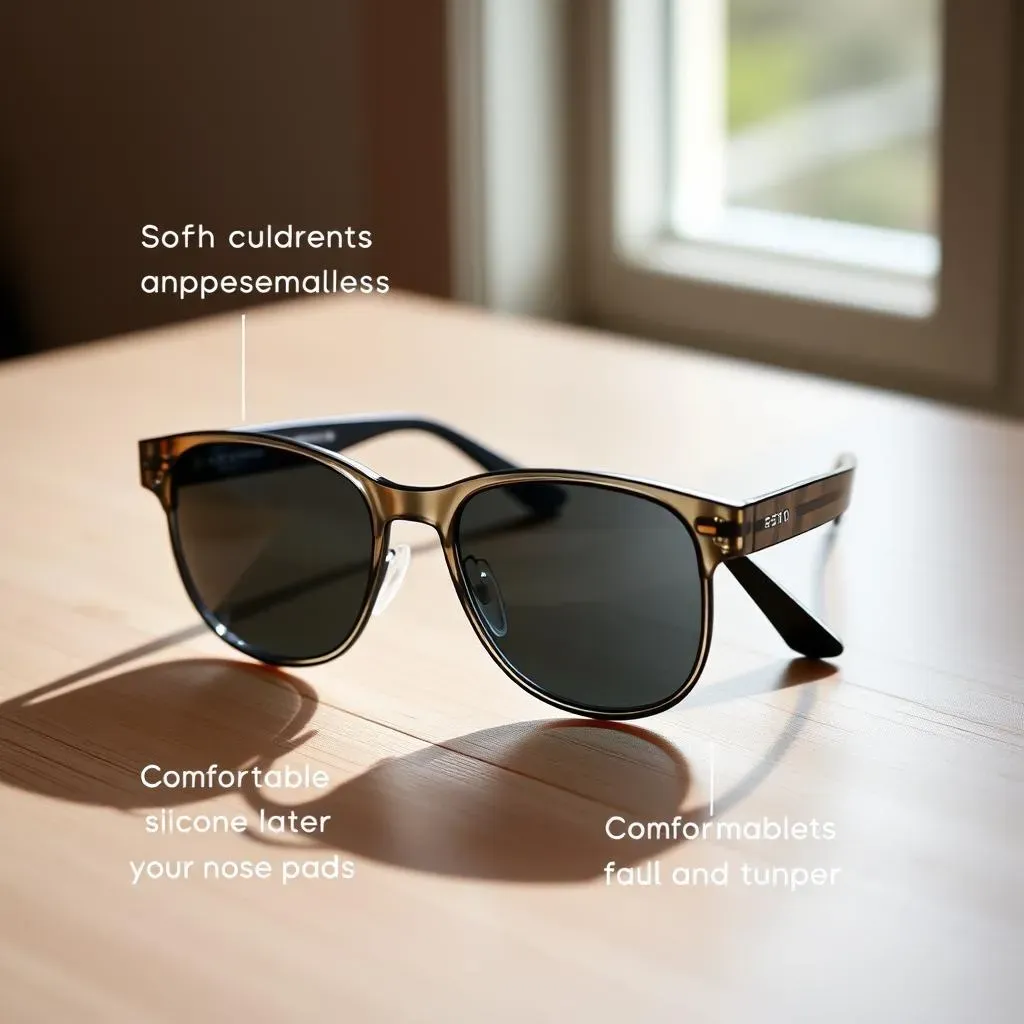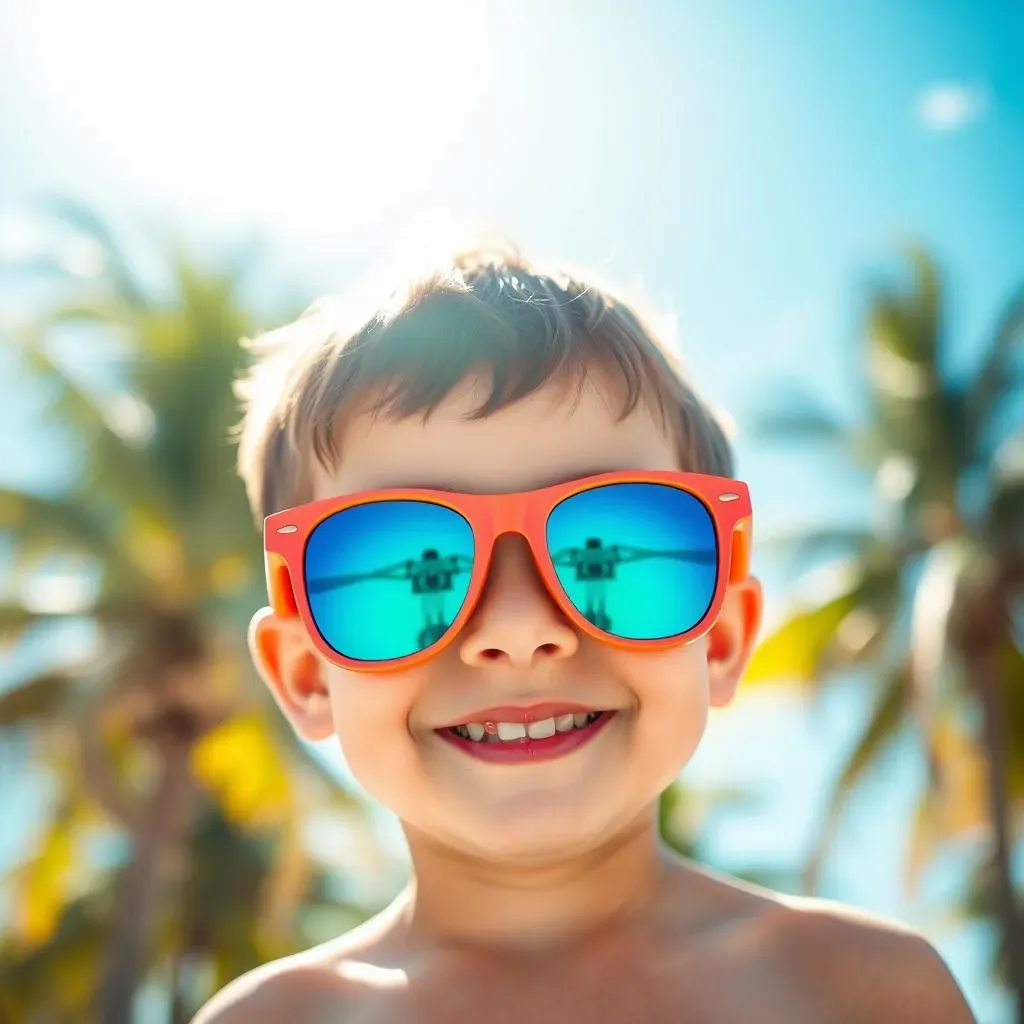Table of Contents
Does your little one's skin get red and irritated easily? You're not alone! Finding the right sunglasses can be a real challenge, especially when you're trying to protect their precious eyes and avoid those annoying red marks around their face. Think about it: those tiny faces are delicate, and the wrong materials can cause real discomfort. This article is your guide to finding the perfect kids' sunglasses for sensitive skin. We'll explore why certain materials are better than others, how the fit matters just as much as the style, and what other features can make all the difference. Ready to say goodbye to irritation and hello to happy, sun-safe adventures? Let's dive in!
Why Sensitive Skin Matters for Kids' Sunglasses
Why Sensitive Skin Matters for Kids' Sunglasses
Little Faces, Big Needs
Ever notice how a tiny scratch on a kid's face looks way redder than on yours? That's because their skin is more delicate. It’s like comparing a baby's soft blanket to your old denim jacket. When it comes to sunglasses, we usually think about protecting their eyes from the sun's bright rays, and that's super important. But for some kids, the sunglasses themselves can cause problems.
Think about it: those frames sit right on their skin, sometimes for hours. If the material isn't right, it can lead to redness, itching, and all sorts of discomfort. No fun, right? You wouldn't want your favorite comfy shirt to suddenly feel scratchy, and neither do they. That's why choosing the right comfortable sunglasses is a big deal for kids with sensitive skin.
The Sneaky Irritants
So, what makes some sunglasses a no-go for sensitive skin? Sometimes, it's the materials they're made from. Certain plastics can release chemicals or cause friction, irritating delicate skin. It's like wearing a wool sweater when you're allergic to wool – instant itch-fest! And it’s not just the frames; even the nose pads or the parts that sit behind the ears can be culprits. Imagine those spots getting red and sore after a fun day outside. Ouch!
Besides the material, how the sunglasses fit also plays a part. Too tight, and they'll dig into the skin, causing pressure and irritation. Too loose, and they'll constantly slide down, which can also lead to rubbing and redness. It's a bit like finding the perfect pair of shoes – they need to fit just right. Want to know more about finding the right fit? Check out this guide on kids sunglasses size.
Choosing the Right Materials
Choosing the Right Materials
Frame Materials Matter
Okay, so we know that some materials can make sensitive skin go haywire. The good news is, there are materials that are much kinder to delicate skin. Think about those super soft baby clothes – the fabric makes a huge difference, right? It's the same with sunglasses. You'll want to look for frames made from hypoallergenic materials. What does that even mean? It basically means they're less likely to cause an allergic reaction. Some plastics, like acetate or certain types of nylon, are often good choices. They're smooth and less likely to leach out irritating chemicals. Also, keep an eye out for rubber or silicone, especially for the parts that touch the skin, like the nose pads and temple tips. These materials are soft and flexible, reducing friction and pressure. For the littlest ones, best toddler sunglasses often feature these gentle materials.
Steering Clear of Irritants
Now, let's talk about what to avoid. While some metals look cool, they can be a problem for sensitive skin. Nickel, for example, is a common culprit for allergies. It's like that one friend who always seems to cause drama – best to keep your distance! If you're considering metal frames, make sure they're made of hypoallergenic metals like titanium or stainless steel. But even then, check if they have any coatings that might cause irritation. It's like checking the ingredients list on your food – you want to know what you're getting!
Another thing to consider is the dye used in the frames. Sometimes, the color itself can be an irritant. Opting for frames with natural or minimal dyes can be a safer bet. When in doubt, clear or lightly colored frames are often a good choice. And remember, baby sunglasses with strap often prioritize gentle materials for maximum comfort.
Material | Good for Sensitive Skin? | Notes |
|---|---|---|
Acetate | Yes | Lightweight and hypoallergenic. |
Nylon | Yes | Durable and flexible. |
Rubber/Silicone | Yes | Soft and comfortable for contact points. |
Titanium | Yes | Hypoallergenic and strong. |
Stainless Steel | Yes (some) | Choose surgical grade. |
Nickel | No | Common allergen. |
Lens Considerations Too
It's not just the frames you need to think about! The lenses also play a role. While lens material isn't usually a direct skin irritant, certain coatings can be. Some cheap or low-quality coatings might flake off or react with sweat, potentially causing issues. Look for lenses with UV protection baked right into the material, rather than just a coating. It's like having sunscreen built into your clothes – reliable and long-lasting. And if your kid is active, kids' polarized sunglasses for sports often have impact-resistant lenses, adding another layer of safety.
Also, consider the color of the lenses. While this is more about visual comfort, certain dyes in the lenses could theoretically cause a reaction if they somehow come into contact with the skin and your child is particularly sensitive. It's a bit of a long shot, but if your child has multiple sensitivities, it's something to keep in mind. Ultimately, choosing high-quality lenses from a reputable brand is always a good idea for both eye safety and overall comfort. What about the fit? Let's explore that next!
The Importance of a Good Fit
The Importance of a Good Fit
Snug but Not Too Tight
Think of Goldilocks and the Three Bears – you don't want the sunglasses to be too big or too small, but just right! When sunglasses fit well, they sit comfortably on the bridge of the nose and behind the ears without squeezing. If they're too tight, they'll press into the skin, which can cause redness and those annoying marks that take forever to disappear. Imagine wearing a hat that's way too small – it just feels uncomfortable and leaves a mark, right? It’s the same with sunglasses. A good fit means the sunglasses stay in place without digging in. You can check out some sunglasses that stay on for active kids.
But it’s not just about avoiding red marks. Sunglasses that are too tight can also restrict blood flow and even cause headaches. Nobody wants a headache to ruin a fun day in the sun! The goal is a gentle, secure fit that feels like a comfy hug for their face, not a tight squeeze.
The Slippery Slope of Poor Fit
Now, what happens if the sunglasses are too loose? Well, they'll constantly slide down their nose, which is super annoying. Plus, when kids keep pushing them back up, their little hands are touching their face all the time, potentially transferring dirt and germs. And guess what? That can also irritate sensitive skin! It’s like trying to play tag with shoes that are too big – you'll be tripping over them constantly.
Loose sunglasses also don't do their job properly. They might not block the sun from all angles, leaving those precious eyes vulnerable. Plus, if they're sliding around, they're more likely to get scratched or broken. Finding the right size is key! Many brands offer size guides to help you choose. For example, knowing your child’s measurements can help when you choose sunglasses for kids. Think about these points:
Fit Issue | Consequence for Sensitive Skin |
|---|---|
Too Tight | Red marks, pressure, restricted blood flow |
Too Loose | Constant touching, potential for dirt/germ transfer, ineffective sun protection |
Beyond Materials: Other Key Features
Beyond Materials: Other Key Features
H3: The Nose Knows Comfort
Ever had sunglasses that kept sliding down your nose? Super annoying, right? For kids with sensitive skin, the nose piece is extra important. Hard plastic nose pads can dig in and cause irritation, especially during sweaty playtime. Look for sunglasses with soft silicone or rubber nose pads. These materials are gentle and grippy, helping the sunglasses stay put without squeezing too tight. Think of it like a soft hug for their little nose! Some stylish sunglasses even come with adjustable nose pads for a custom fit.
Also, consider sunglasses with a one-piece bridge if your child is very sensitive. This design avoids separate nose pads altogether, reducing potential pressure points. It's like wearing a smooth, seamless sock instead of one with a bumpy seam.
H3: Temple Tips and Staying Power
The ends of the arms, called temple tips, also matter. If they're made of a scratchy material or have sharp edges, they can irritate the skin behind the ears. Again, soft silicone or rubber is your friend here. These materials are flexible and feel much nicer against the skin. Plus, well-designed temple tips can actually help the sunglasses stay on better! Nobody wants their shades flying off mid-swing. For really active kids, you might even consider sunglasses for active children which often have extra grip on the temple tips.
Think about how some backpacks have padded straps – it makes carrying them so much more comfortable. It's the same idea with the temple tips of sunglasses. And speaking of staying power, some sunglasses come with straps. Are you wondering about baby sunglasses with strap? They can be a lifesaver for younger kids who tend to pull their sunglasses off.
Feature | Why it Matters for Sensitive Skin |
|---|---|
Soft Silicone/Rubber Nose Pads | Gentle on the nose, prevents digging and irritation. |
One-Piece Bridge | Eliminates separate nose pads, reducing pressure points. |
Soft Silicone/Rubber Temple Tips | Comfortable behind the ears, reduces scratching and irritation. |
Adjustable Components | Allows for a customized and comfortable fit. |
H3: UV Protection is Non-Negotiable
Okay, this isn't directly about skin sensitivity, but it's super important for all kids! Make sure the sunglasses you choose offer 100% UVA and UVB protection. Think of it like sunscreen for their eyes! The sun's rays can be harmful, and good sunglasses are essential for protecting their vision. You can find kids sunglasses with UV protection easily these days. It’s like making sure they wear a helmet when riding a bike – it’s a must-do for safety.
Polarized lenses are also a great feature, especially for bright days or when you're near water or snow. They help reduce glare, making it easier for your child to see clearly and comfortably. Imagine trying to spot fish in a lake with the sun reflecting everywhere – polarized lenses cut that glare right down! Whether it's for the beach or everyday wear, prioritizing UV protection is key. You can even find kids sunglasses for the beach specifically designed for bright conditions.
Wrapping Up: Happy, Protected Eyes
Choosing the right sunglasses for kids with sensitive skin doesn't have to be a headache. By focusing on gentle materials, a comfortable fit, and essential features like UV protection and impact resistance, you can find a pair that keeps your child's eyes safe and their skin happy. Remember, it's about finding that sweet spot where protection meets comfort, letting your little one enjoy the sunshine without the sting of irritation. So go forth and find those perfect shades!
